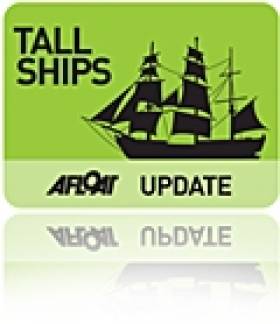Displaying items by tag: Irish Tallships
‘Irish’ Tallships Are Thin and Small On the Sea-Ground
#IRISH TALLSHIPS – Of the 40-plus tallships participating in the Dublin Tallships Race Festival, only two vessels are Irish, and as previously reported on Afloat.ie, there have been calls to have a new cross-border national sail training flagship reinstated, writes Jehan Ashmore.
What represents Ireland, are not large A-class tallships but smaller vessels in the form of the Naval Reserve training Bermuda ketch STV Creidne (C-class) and the Kinsale based schooner Spirit of Oysterhaven (D-class), which sailed through Dalkey Sound yesterday morning.
It is a stark contrast to the glory days of when the Irish tallships, met together for a historic first and only gathering at the inaugural Waterford Tall Ships Race Festival back in 2006. The tallship trio were brigantine Asgard II (which sank in 2008) and the barques Dunbrody and Jeanie Johnston.
The unique gathering took place during the 'Parade of Sail' in Waterford Estuary, where Asgard II was given the honour in leading the fleet, followed by her fellow Irish fleetmates and the rest of the international flotilla.
Both the replica 19th century Dunbrody and Jeanie Johnston remain in a static role in New Ross, Co. Wexford and in Dublin Docklands, where they serve as floating museums, telling the story of emigration and the famine ships.
During the Dublin Tallships Festival, the Jeanie Johnston will be open to the public free of charge throughout the weekend from 10am to 5pm (last entry) and is on a first come first basis.
Entry to the barque is courtesy of Dublin Docklands Development Authority which purchased the vessel in 2005. For further information visit: www.jeaniejohnston.ie/index.html























